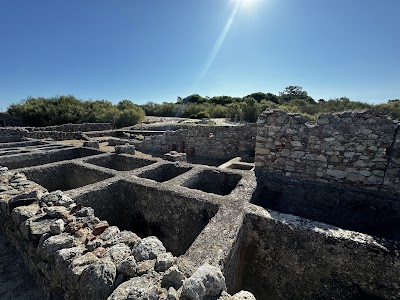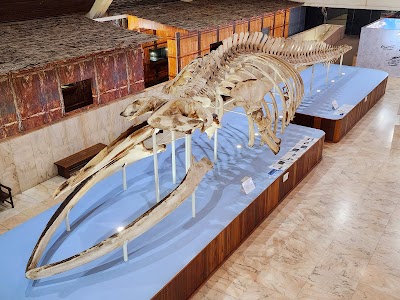Sabha Palm Grove (بستان النخيل سبها)
Overview
Located in the heart of the Sabha District in southwestern Libya, Sabha Palm Grove is a mesmerizing oasis that provides a serene escape from the surrounding arid desert. This hidden gem envelops visitors in a lush canopy of date palms and vibrant vegetation, showcasing the region's natural beauty and rich cultural heritage.
Dating back centuries, Sabha Palm Grove has been a vital lifeline for the communities that inhabit this arid region. Historically, the grove served as a source of shade, water, and resources for early settlers and traders navigating the Saharan routes. It emerged as a crucial stopover for caravans traveling the Trans-Saharan trade network, which linked Sub-Saharan Africa with North African and Mediterranean markets. These ancient trade routes facilitated the exchange of valuable goods like gold, salt, and textiles, significantly shaping the region's economic and cultural landscape.
The importance of Sabha Palm Grove goes beyond its role as a trade hub; it has also functioned as an important agricultural center. The grove enables the cultivation of date palms, which thrive in the warm climate and serve as a staple food source for the local population. The dates harvested here are celebrated for their exceptional quality and sweetness, frequently featured in traditional Libyan cuisine. Additionally, the grove supports the growth of various crops, including vegetables and grains, thanks to the ingenious irrigation systems developed by early inhabitants.
For modern tourists, Sabha Palm Grove offers a unique opportunity to glimpse traditional Sahara life and enduring culture. Visitors can stroll along the lush pathways, surrounded by towering date palms swaying gently in the breeze. The grove provides a tranquil setting for relaxation and reflection, far removed from bustling urban centers. Furthermore, it showcases intricate irrigation channels, known locally as "foggaras," which are marvels of ancient engineering designed to efficiently distribute water throughout the grove.
One of the most captivating aspects of visiting Sabha Palm Grove is the chance to engage with local residents and learn about their customs and way of life. Many families living near the grove have deep-rooted ancestral ties to the area and are eager to share their heritage with visitors. Tourists can witness traditional crafts being made, sample delicious dishes prepared with local ingredients, and even participate in community events and festivals celebrating the oasis's rich cultural history.
Additionally, the grove serves as a habitat for various bird species and other wildlife, making it a haven for nature enthusiasts and birdwatchers. The area's biodiversity provides a refreshing contrast to the surrounding desert landscape, offering a peaceful retreat for those seeking a connection with nature. The vibrant greenery against the stark desert backdrop also presents countless opportunities for photography, allowing visitors to capture the timeless beauty of this Saharan oasis.
For those interested in geology and natural sciences, the surrounding region offers even more exploration. The Sahara's unique topography, along with nearby archaeological sites, reveals insights into the area's ancient geological history and the human activities that have shaped it over millennia. Guided tours often include visits to historic ruins, ancient rock carvings, and prehistoric cave paintings, enriching the overall experience with a deeper understanding of the region's past.
In conclusion, Sabha Palm Grove is more than just a picturesque oasis; it stands as a living historical landmark that encapsulates the essence of Libyan heritage and the resilient spirit of its people. Whether you are a history buff, nature lover, or simply seeking tranquility amidst natural beauty, a visit to this enchanting grove promises a memorable and enriching experience. By immersing yourself in the vibrant culture and serene landscapes of Sabha Palm Grove, you will gain a deeper appreciation for the timeless allure of the Sahara and the enduring legacy of its inhabitants.




